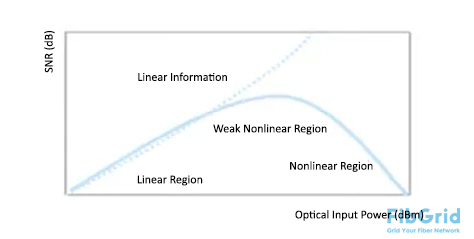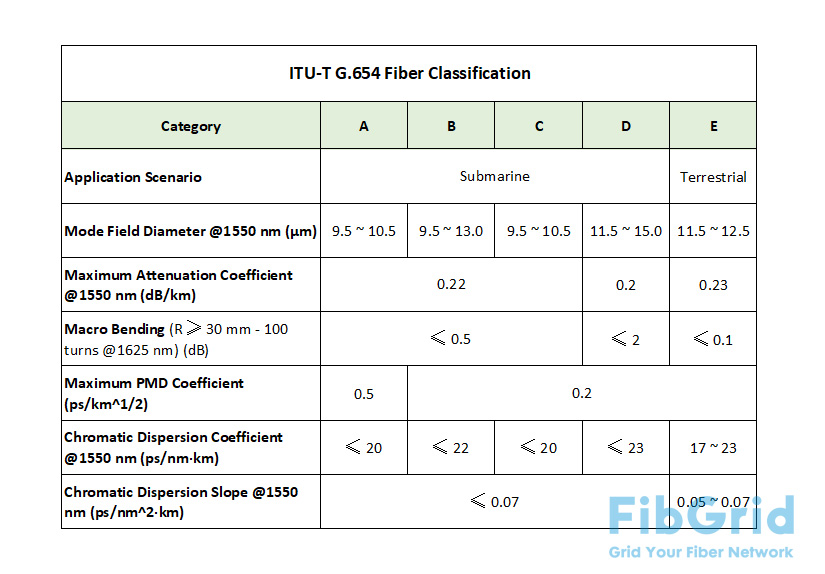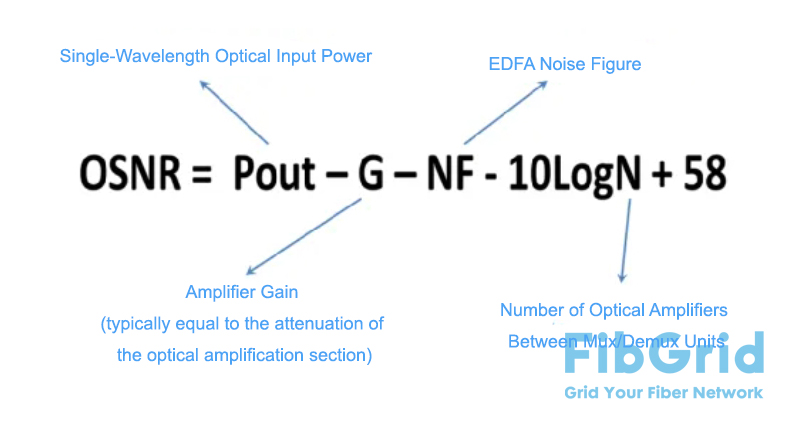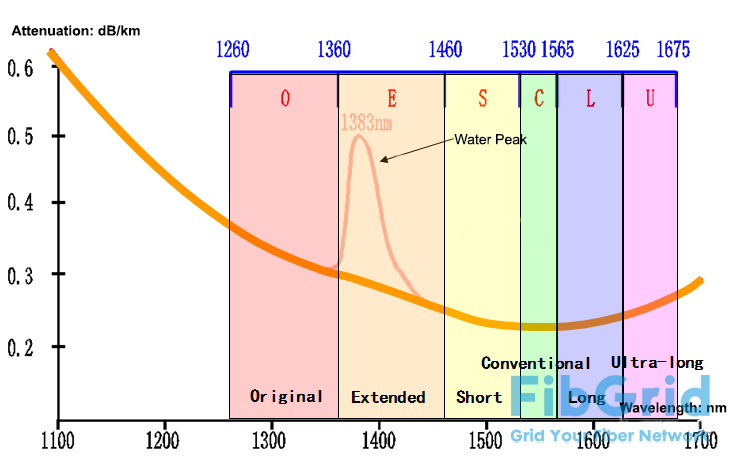
 Online Service
Online Service - +86-755-32801225
- Info@FibGrid.com
- 008618126154018
- HQLJJHZX
- Ryan Hwang
- +86-755-32801225

 Online Service
Online Service The rapid advancement of communication technology has led to a significant increase in the single-core capacity of fiber optic communication, doubling every 3 to 5 years. However, the main types of optical fibers and their key transmission characteristics have remained largely unchanged for many years. For example, the widely used G.652D fiber optic cable has been in use for nearly 20 years. In recent years, a new type of fiber optic cable, the G.654E, has begun to be used in some long-distance trunk lines, showing promising results. So, what is G.654E fiber optic cable, and will it replace the traditional G.652D fiber optic cable?

Thus, G.654 fiber became characterized by low attenuation and a large effective area. Subsequently, G.654 fiber optimized around attenuation and effective area, evolving into four subcategories: A, B, C, and D.

(1) Advantages of G.654E Fiber
In WDM systems with single-carrier rates above 100G, as the single-carrier rate increases, the system’s OSNR (Optical Signal-to-Noise Ratio) tolerance requirements also increase. OSNR is influenced by factors such as input optical power and the attenuation of optical amplification sections. The large effective area and low attenuation of G.654E fiber can significantly improve OSNR.

The effective area of G.654E fiber is mainly available in two types: 110 μm² (A110) and 130 μm² (A130). Between 2015 and 2018, domestic trunk lines used both A110 and A130 fibers. After 2018, only A130 fiber has been used in newly built trunk lines. The effective area of G.654E A130 fiber is approximately 47% larger than that of G.652D A80 fiber. With the same nonlinear effect, the optimal input optical power can be increased by about 1.7 dB.
The typical attenuation value of G.654E fiber is about 0.02 dB/km lower than that of G.652D fiber. For an 80 km optical amplification section, the attenuation of G.654E fiber is about 1.6 dB lower than that of G.652D fiber.
Since the locations of optical amplification stations in land-based trunk transmission systems are usually fixed, increasing input optical power and reducing fiber attenuation do not significantly reduce the number of amplification stations required. With the number of amplification stations essentially unchanged, the OSNR of a system using G.654E fiber can be improved by about 3 dB compared to G.652 fiber.
(2) Disadvantages of G.654E Fiber
The cutoff wavelength of G.654E fiber is 1530 nm, which limits its use at wavelengths below 1530 nm. Currently, in metropolitan area networks (MANs), many transmission systems with single optical modules over 100G operate in the vicinity of the 1310 nm wavelength (O-band), such as core and aggregation layer systems for 5G backhaul. Therefore, G.654E fiber is not suitable for use in metropolitan area networks.

The market scale for G.654E fiber is much smaller compared to G.652D fiber, which results in a higher price for G.654E fiber. At present, the unit price of G.654E bare fiber is approximately 10 times that of G.652D fiber.
Currently, operators have deployed nearly 15,000 kilometers of G.654E fiber in inter-provincial and intra-provincial trunk lines, with results aligning closely with the analysis above. This clearly shows the necessity of using G.654E fiber in inter-provincial trunk lines.
In contrast, intra-provincial trunk lines typically have lower single-carrier rates, fewer optical amplification sections, and lower OSNR tolerance requirements. Therefore, there is less need to use G.654E fiber in these systems, and it is recommended to use G.652D low-loss fiber (which costs about 1.5 to 2 times more than regular G.652D fiber).
In metropolitan area networks, some optical transmission systems use wavelengths within the cutoff wavelength range of G.654E fiber, so G.654E fiber is not suitable for metropolitan area transmission.
